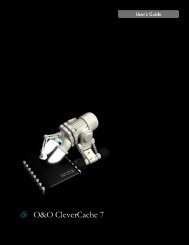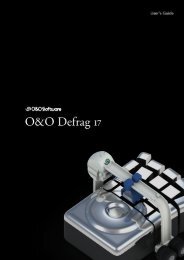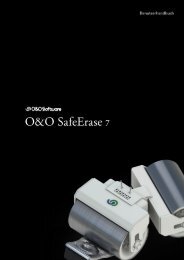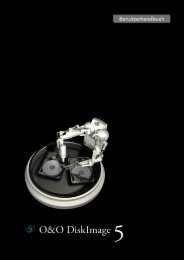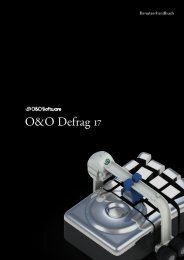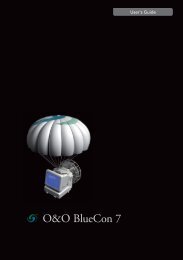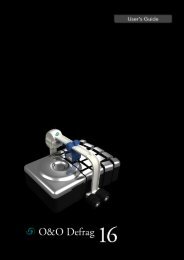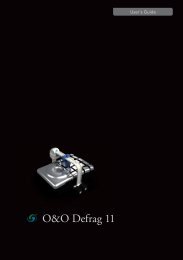O&O DiskImage 7 User's Guide - O&O Software
O&O DiskImage 7 User's Guide - O&O Software
O&O DiskImage 7 User's Guide - O&O Software
Create successful ePaper yourself
Turn your PDF publications into a flip-book with our unique Google optimized e-Paper software.
Quick Start<br />
• For the simplified view select O&O <strong>DiskImage</strong> Express(Express View).<br />
• O&O <strong>DiskImage</strong> Tray starts the TrayIcon, which is shown in the info area in the task bar and informs you on<br />
the activity status of O&O <strong>DiskImage</strong>.<br />
You can access the program help by clicking on Help in the menu bar in the tab Help or by pushing F1.<br />
One-click imaging - Create an image of the entire computer<br />
Create images of all non-imaged drives<br />
Image individual drives<br />
Restore entire computer or system partition<br />
Restore drives<br />
Backup individual files and folders<br />
Restore individual files and folders<br />
Create image of the changes only<br />
Create images of all non-imaged drives<br />
Creating images on a regular basis is your only protection against data loss. Working daily on your computer causes it<br />
to collect ever larger amounts of data. If your last image was created some time ago, it does not include your most current<br />
files.<br />
In the O&O <strong>DiskImage</strong> control center (start page), you get an overview of drives that have either not been imaged or<br />
whose image is considerably old. The color on display reflects the lapse of time since the last image was created.<br />
0 - 10 Days = Green<br />
10 - 20 Days = GreenYellow<br />
20 - 30 Days = Yellow<br />
Over 30 Days = Orange<br />
Never been imaged = Red<br />
We strongly advise you to prevent data loss and protect yourself with just a few clicks:<br />
1. Click Image non-imaged drives now.<br />
2. Then check the target path entered for the image. We recommend saving the image on an external drive, e.g.<br />
USB hard drive.<br />
3. Click Start to continue with the imaging process. The process might take some time depending on the size of<br />
the drive.<br />
Note: An image of all the listed drives will be created using default settings (Image of used sectors).<br />
Tip: You can create a job for automatically imaging your drives on a regular basis. See chapter Scheduling<br />
functions.<br />
Tip: If you want to create an image of your entire computer, you can also use One-click imaging.<br />
O&O <strong>DiskImage</strong>-19



